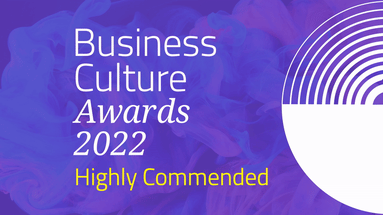 CAE's People Services Director Natalie Hailey, explains how building a company culture that is based on coaching, involves a shift in the way we think, learn and communicate. A coaching culture cannot exist simply off the back of processes and policies; it can only exists when we consciously change our norms.
CAE's People Services Director Natalie Hailey, explains how building a company culture that is based on coaching, involves a shift in the way we think, learn and communicate. A coaching culture cannot exist simply off the back of processes and policies; it can only exists when we consciously change our norms.
Creating a company ethos that is based on coaching involves a shift in the way we think, learn and communicate. A coaching approach cannot exist simply off the back of processes and policies; it can only exists when we consciously change our norms.
Coaching, mentoring and personal development is a fundamental aspect of our culture at CAE, and one we are really proud of. Cultivating a coaching atmosphere allows our people to learn and development, which in turn develops our business. Engagement is a crucial ingredient to our success and having an environment that allows people to engage in the unknown and challenge the status quo is both empowering and inspiring. We want our people to be truly empowered, yet fully supported, and coaching gives us the perfect method to achieve this.

In today’s highly competitive business world, it’s more important than ever for organisations to engage their people - both intellectually and emotionally. The right culture, behaviours and values that form around a baseline of coaching, mentoring, learning and personal development can help an individual identify themselves as a vital part of the organisation whilst creating a heightened level of ownership. It also improves employee engagement and retention, helping the company’s bottom line while ensuring that people in the business feel committed to accomplishing their shared goals, aligned to the company’s purpose and values.

Having recently been recognised by The Business Culture awards with a “Highly Commended” award for Coaching and Personal Development, Natalie Hailey, People Services Director here at CAE shares her experience and tips on how to develop a coaching culture in your organisation.
5 Steps
Over the last five years, we have been on a journey at CAE to weave our values, behaviours and experiences into developing an authentic culture that always comes first. A culture that is based on personal and professional development. To do this it has taken a lot of time, effort and lessons learnt along the way, but the unity, clarity and sense of togetherness makes it all worthwhile. Here are my five steps you can take on your journey to embed coaching into your organisational culture.
1. Advocate for the benefits of coaching cultures (for individuals and teams)
People need to see how a culture that centres on coaching, mentoring and personal development will impact them directly. Keep communication high and frequent about the benefits and what they have to gain. Share with them the value that the culture can have on their personal and professional growth.
2. Get leadership on board
If there is one thing that is top down, it culture. For a leader to be authentic they must walk the talk and ultimately lead by example. Have your leaders discuss the benefits of coaching, share success stories from their own coaching experience and demonstrate them. Companies with strong coaching cultures will have leadership promoting it, and showing the value and results that coaching has had on themselves and their own careers.
3. Share knowledge and build a learning culture too!
Provide learning opportunities for people to gain a deeper understanding of coaching and its methods. This can be done informally through lunch and learns, or as part of companywide initiatives such as role shadowing.
Offering training around topics like how to give feedback, negotiation, problem-solving, conflict resolution and delegation allows a coaching culture to take shape within your organisation. As people learn how to coach better they’ll share that knowledge with their peers and embed within their own teams. By doing so they’ll reinforce their own learning and engage in knowledge sharing – something we have found at CAE to be key to the success of our culture.
Watch our values and culture video
4. Organise group and 1-on-1 coaching and mentoring
While coaching and mentoring are different, having programmes that offer both can really help to foster a coaching culture.
The key is that mentoring programmes have objectives and goals designed to accelerate development. You can pair people together with mentors and encourage them to define their long-term career goals. Mentors will support them and help them reach these goals.
You can also organise group mentoring sessions. These can be places where people coach each other, share ideas and offer encouragement. Peer learning helps to strengthen company culture and has several other benefits too.
5. Share the successes
Uncovering and sharing stories of how coaching, mentoring and personal development has been successful can help people see the value and want to be involved. First person accounts of career success stories and personal development achievements are a powerful way to demonstrate the impact and the value of recognising and investing in self-development.
It is also vital that leaders and managers share their positive experiences with others. Doing this tells colleagues that you’ve had a great experience and want them to have that same experience.
Hearing about real successes can inspire others to become coaches or open them up to being coached themselves.
In summary
Successful companies - large and small - use coaching, mentoring and personal development planning to tackle complex human resource challenges, such as increasing employee engagement, improving retention and enabling company succession plans.
By encouraging a coaching culture, companies ensure that people take an active role in spreading knowledge and best practices throughout their organisation. The collaborative nature of mentoring and coaching develops the interpersonal links between individuals, which creates a connection and increases overall engagement.


